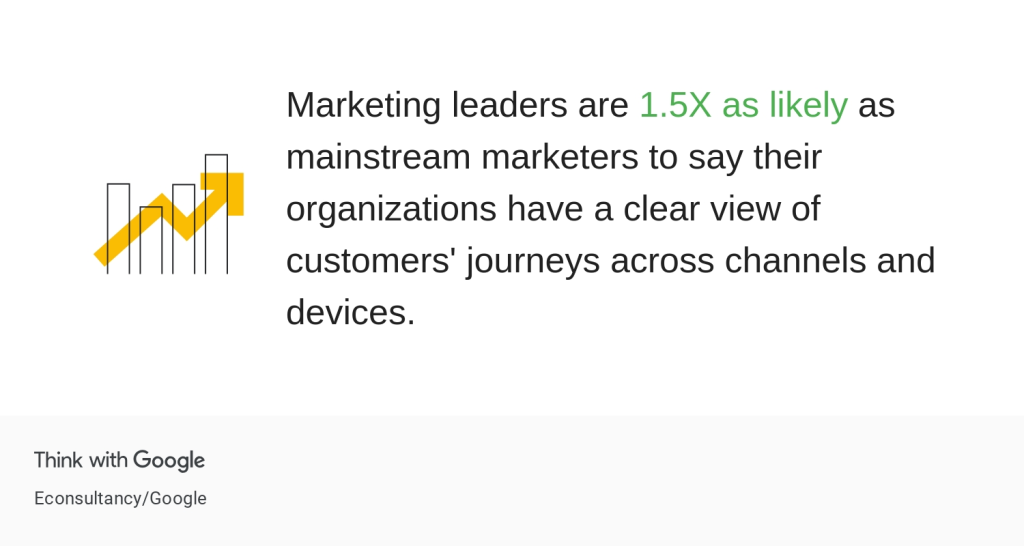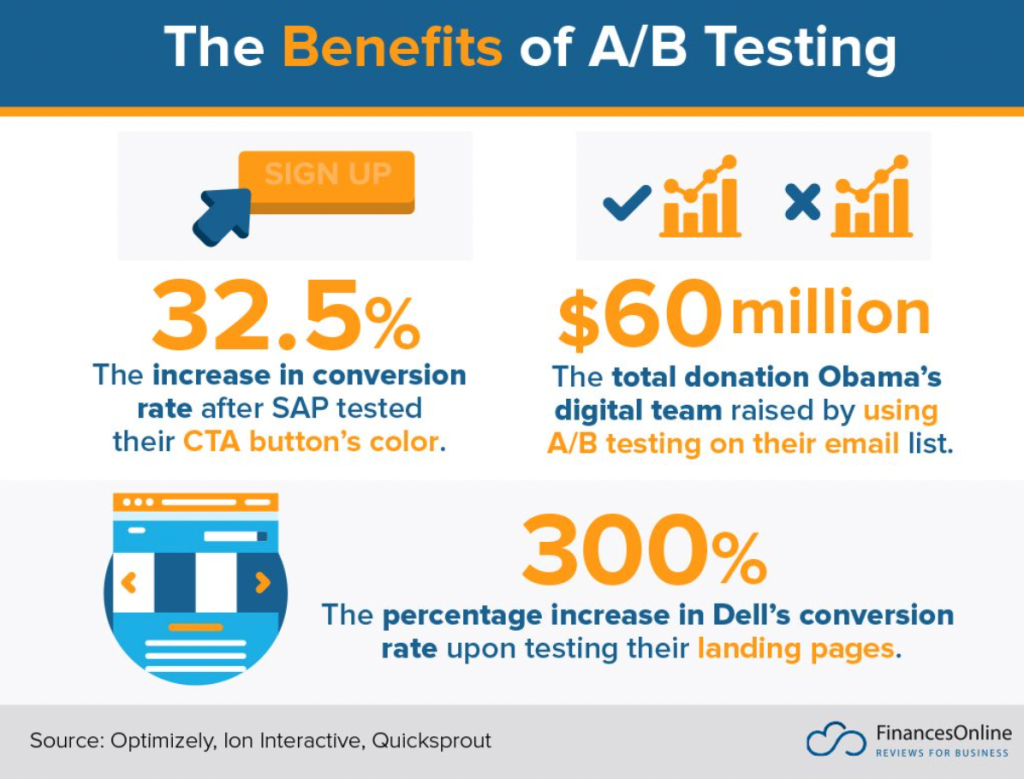7 Digital Marketing Traps that First Time Marketers Fall Into
Every marketer falls into at least one marketing trap early in their career. In this post, we’ll discuss some of the most common traps and how to avoid them. By being aware of these traps, you can stay on track and produce successful marketing campaigns.
Quick Links
So, what are the biggest marketing traps that first time marketers fall into? Let’s take a look.
1. Not Researching the Customer Journey

According to Think with Google, marketing leaders are 1.5 times as likely as mainstream marketers to say their organizations have a clear view of customers’ journeys across channels and devices. The customer journey is the process that new customers go through when they’re considering a purchase. When you interact with customers at every stage, you help guide customers in their purchase and increase your conversion rate.
There are a number of different stages in the customer journey. Here are some of the most important ones:
- Awareness – The customer becomes aware of a problem or need
- Interest – The customer is interested in finding a solution to their problem, and starts to research viable solutions
- Consideration – The customer is considering their options and comparing different products or solutions
- Purchase – The customer makes a decision and purchase
- Post-purchase – The customer uses and evaluates the product
You need to understand what happens at each stage of the customer journey in order to create effective marketing campaigns. For example, you can create digital ads with content that talks about a customers’ problem and ask them to sign up for an email list. Then, you can create content and use email marketing to share how your product or service helps solve the problem or pain point.
2. Not Segmenting Your Audience
When you don’t segment your audience, you run the risk of creating messaging that doesn’t resonate with certain groups of people. As a result, your campaigns may fall flat and fail to reach their full potential. A study done by DMA has shown that marketers have found a whooping 760% increase in email revenue from segmented campaigns.

Source
There are a number of different ways to segment your audience. Here are some steps to take to ensure effective segmentation:
- Define your target market
- Research your audience and understand their needs
- Develop buyer personas for your different segments
- Choose the right segmentation criteria
- Test and adjust your segmentation strategy as needed
3. Failing to Set Specific, Measurable Goals
One of the most common marketing traps that marketers fall into is failing to set specific, measurable goals. Without defined goals, it’s difficult to determine whether or not a campaign was successful. And without such measurements, it can be hard to improve future campaigns.
In order to avoid this trap, set specific and measurable goals for each marketing campaign. That way, you can track progress and make necessary changes along the way.
Tips for setting effective goals:
- Make sure your goals are realistic and achievable
- Create measurable milestones so you can track your progress
- Make sure your goals are aligned with the overall business strategy
In addition to setting goals, measuring key metrics is also important to know if your overall marketing campaign is successful and if there are areas to improve on. There are a number of different metrics you can use to measure your results. Here are some of the most common ones in digital marketing
- Traffic
- Leads
- Conversions
- Sales
- Engagement
Website traffic is a good metric to measure because it shows you how many people are coming to your website. However, not all website traffic is equal. You should also focus on leads and conversions.
Leads are potential customers who have shown interest in your product or service. Conversions are when a lead purchases something. Sales is another important metric to track, as it shows you how much revenue your campaigns are generating and your return on investment. Engagement is also key, as it shows how interested your audience is in your content.
4. Running Marketing Initiatives Without Focus
Do you feel like you should be doing everything at once in order to achieve your marketing goals? If so, you’re not alone. Many first time marketers make the mistake of trying to do it all when they get started.
The problem with this approach is that it often leads to scattered results and a lack of focus. Instead of trying to accomplish everything at once, it’s better to focus on one or two things at each marketing stage and channel and do them well.
Tips for avoiding this trap
- Define your priorities and rank them
- Define the marketing tactics and platform to achieve those goals
- Create a timeline for each marketing tactic
- Map out and delegate tasks within your team
5. Neglecting Search Engine Optimization (SEO)
Did you know that 61% of B2B marketers stated that organic traffic generated more leads than any other marketing initiative, in Hubspot’s State of Marketing report?
One of the biggest mistakes a marketer can make is neglecting search engine optimization (SEO) as part of your marketing strategy. SEO is the process of improving the visibility of a website or web page in search engine results pages (SERPs). If you don’t optimize your website for search engines, you’re missing out on a lot of potential traffic and leads.
There are a number of different SEO techniques you can use to improve your website’s visibility. Here are some of the most important ones
- Keyword Research
- On-Page Optimization
- Off-Page Optimization
- Link Building
- Content Marketing
SEO is a complex and ever-changing field, so do stay up-to-date on the latest trends. Google releases core updates several times a year, and it’s important to take note of them to optimize your search rankings.
6. Creating Content that Doesn’t Appeal To Your Audience
Creating content that doesn’t appeal to your audience is one of the common mistakes a first time marketer makes. If you’re not careful, you could end up creating content that is irrelevant and uninteresting to your target audience, leading to poor engagement rates. Always keep your audience in mind during content creation.
There are a few things you can do to make sure your content hits the mark with your audience. First, you need to understand who your audience is and what they’re interested in. Once you know this, you can create content that is tailored to their needs and interests. Secondly, use effective copywriting in your product headlines and visuals to attract the attention of your audience. Finally, make sure your content is well-written and free of grammar and spelling mistakes.
To save time on content creation, you can use AI copywriting software to speed up the process. This type of software uses artificial intelligence to quickly generate high quality content that is creative and engaging.
7. Not A/B Testing Campaigns
Another common marketing trap is not A/B testing their campaigns. Testing allows you to see how your campaign performs and make necessary adjustments.
A/B testing is when you compare two versions of a campaign to see which one performs better. For example, you might test two different subject lines to see which one gets more opens. Or, you might test two different call-to-action buttons to see which one gets more clicks.
There are a number of different things you can test in your digital marketing campaigns, like the copy, images, design, and call-to-action.

Some benefits of A/B testing include an increase in sales and conversion rate. SAP saw a 32.5% increase in conversion rate just from changing their CTA button’s color! Sometimes, just a simple tweak in your campaign can help to improve your marketing results significantly.
Increase Your Marketing Effectiveness Today
When you’re creating your content, make sure to keep these 7 marketing traps in mind. By avoiding these common mistakes, you’ll be on your way to create successful marketing campaigns that will help grow your business. What will you do today to make sure your marketing is more effective?
Author Bio

Chloe Teo is a writer and a Channel Sales Manager. With 9 years of B2B experience in tech, she helps businesses grow sales exponentially. Her passion is to help buyers make better purchase decisions by writing reviews about software and gadgets at ChloeTeo.com.
In her free time, she enjoys reading, writing, and eating good food.
How to Use AI-Powered SEO Tools for WordPress eCommerce
SEO is a critical factor in the success of any e-commerce WordPress store. As competition…
0 Comments11 Minutes
Why Short-Form Videos Are the Future of Content Marketing
Your Instagram customers spend over 50% of their time watching short-form videos and reels. Rather…
0 Comments12 Minutes
The Role of Digital Marketing in Business Growth
Online marketing touches every aspect of a business, whether it is initiating the idea or for an…
0 Comments3 Minutes
AI Meets Authenticity: Balancing Automation and Human Touch in Content Marketing
Is your brand starting to sound like a robot? In a world where algorithms write faster than any…
0 Comments8 Minutes
Essential Tools for Enhancing Web Design and UX Hosting
Have you ever visited a website that felt slow, clunky, or confusing? A website that is poorly…
0 Comments11 Minutes
How a Mini Cart Transformed My Store’s Shopping Experience
Okay, real talk—running an online store is hard. You think you’ve got everything figured out, you…
0 Comments9 Minutes
Balancing Your Security Initiatives With Industry Compliance Requirements
Managing a business today comes with a number of daily battles that need to be fought. Resources…
0 Comments11 Minutes
Best plugins to enhance the customer shopping experience
Customer experience is a key part of every online store. A good experience helps customers find…
0 Comments7 Minutes








